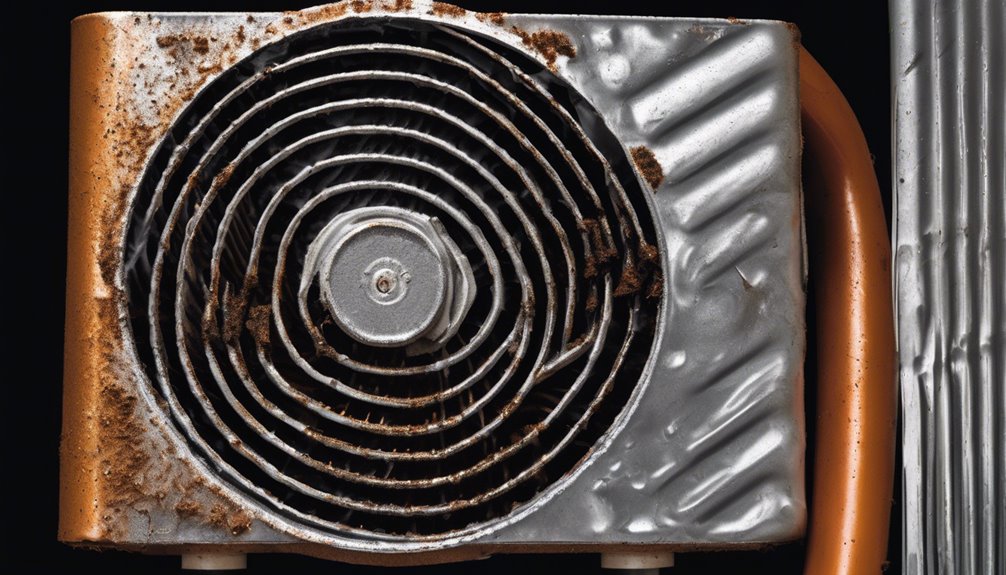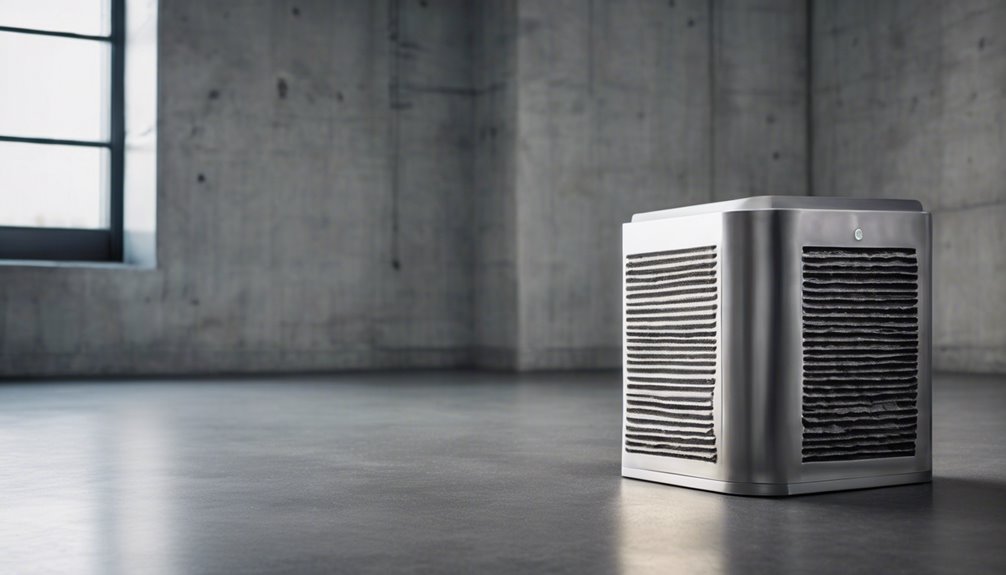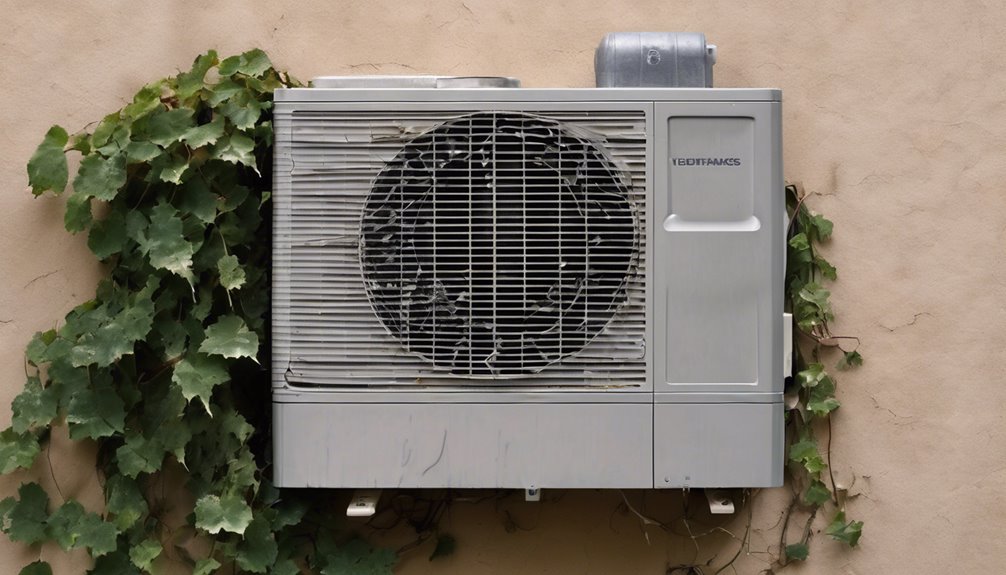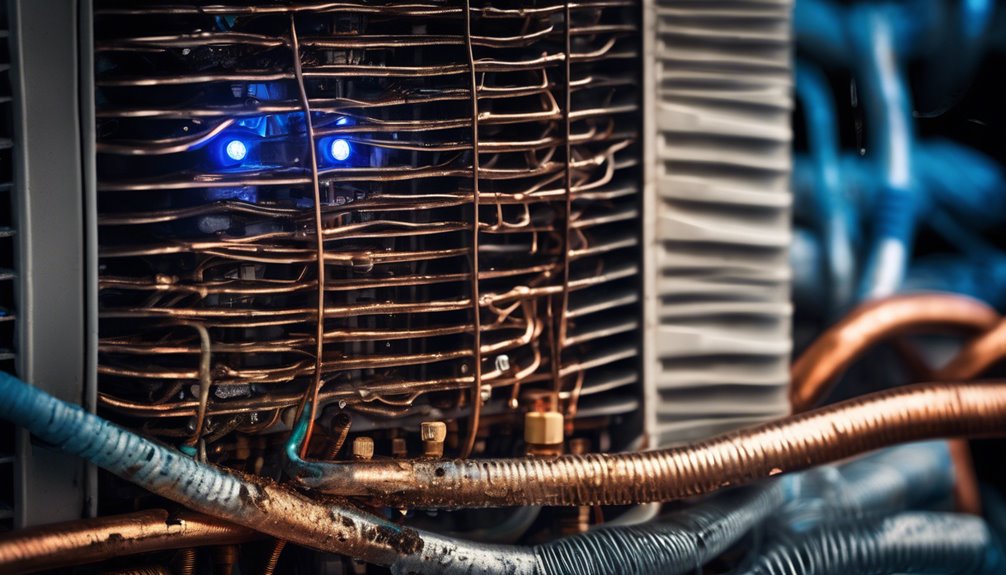To clean your AC evaporator coil, start by preparing with necessary supplies and considering coil accessibility and cleaning frequency. Identify your coil type, whether it's a slab coil or one with individual fins, and choose a cleaning method based on its material and type. Turn off the power, inspect the coil, and gently scrub it with a soft-bristled brush or cloth. By following these steps, you'll be on your way to improving airflow and reducing energy bills – and there's more to learn about maintaining your coil for optimal performance.
Key Takeaways
- Prepare by gathering necessary supplies, considering coil accessibility, and thinking about cleaning frequency, especially in dusty areas or with pets.
- Identify the type of coil, including slab coils or coils with individual fins, to understand its design and functionality.
- Choose a cleaning method based on coil material and type, considering manufacturer's recommendations and specific situations.
- Clean the coil safely and effectively by turning off power, inspecting, wearing safety precautions, and gently scrubbing with a soft-bristled brush or cloth.
- Regularly maintain the coil by performing routine inspections, ensuring proper airflow, and keeping the surrounding area clear of clutter.
Preparing for the Cleaning Process
Before cleaning your AC evaporator coil, gather necessary supplies to ensure a smooth process. You'll need a soft-bristled brush, a garden hose, and a mild detergent.
Having these supplies ready will save you time and frustration. Consider the coil accessibility, as this will affect the cleaning method you use.
If the coil is easily accessible, you can use a more thorough cleaning approach. If it's harder to reach, you may need to use a specialized tool.
Additionally, think about the cleaning frequency. If you live in a dusty area or have pets, you may need to clean your coil more often.
Cleaning every 1-3 months can improve airflow and reduce energy bills. By preparing properly, you'll be able to effectively clean your AC evaporator coil.
Identifying the Type of Coil You Have
You're likely to encounter one of two types of coils in your AC unit: a slab coil or a coil with individual fins.
The coil location also plays a significant role in determining its type. Slab coils are usually located in the unit's interior, while coils with individual fins are often found in the exterior or exposed areas.
Additionally, consider the coil materials used in your AC unit. Copper, aluminum, or steel coils with protective coatings are common.
Identifying the type of coil you have will help you understand its design and functionality. This knowledge will be essential in the cleaning process, as different coils require specific cleaning methods and materials.
Choosing the Right Cleaning Method
Now that you've identified the type of coil you have, it's time to decide on the best cleaning method.
The coil material plays a significant role in determining the cleaning approach. For instance, aluminum or copper coils can be cleaned with a mild detergent and water, while coils with a specialized coating may require a specific cleaning solution.
Coil material matters: aluminum and copper coils need mild detergent and water, while coated coils require specific solutions.
Your cleaning frequency also depends on the coil type and usage. If you have a coil that's prone to heavy dust buildup or is located in a high-traffic area, you may need to clean it more frequently.
Consider the manufacturer's recommendations and your specific situation to choose the right cleaning method for your AC evaporator coil.
Cleaning the Coil Safely and Effectively
To ensure a successful cleaning process, turn off the power to your AC unit at the circuit breaker or fuse box to prevent any accidental start-ups that could cause injury or damage.
Before you begin cleaning, perform a coil inspection to identify any debris or dirt buildup. Wear safety precautions like gloves and goggles to protect yourself from harsh cleaning agents and sharp coil edges.
Remove any large debris from the coil surface, then apply your chosen cleaning solution. Use a soft-bristled brush or cloth to gently scrub the coil, working from the top down to prevent dirt and debris from spreading.
Maintaining Your Coil for Optimal Performance
Regular maintenance is key to keeping your AC evaporator coil in top shape and ensuring your air conditioner runs efficiently.
By performing routine coil inspections, you'll catch any issues before they become major problems. This includes checking for dirt, dust, and debris that can reduce airflow and increase energy bills.
Catch issues before they become major problems by inspecting your AC evaporator coil for dirt, dust, and debris regularly.
You'll also want to ensure proper airflow around the coil by keeping the surrounding area clear of clutter. By maintaining your coil, you'll enjoy energy savings and a longer system lifespan.
Additionally, a well-maintained coil will provide better air quality and a more comfortable indoor temperature. Stay on top of maintenance, and your AC will continue to run smoothly and efficiently.
Frequently Asked Questions
Can I Clean My AC Evaporator Coil With a Garden Hose?
You can try cleaning your coil with a garden hose, but be cautious not to apply too much pressure, which can damage the coil. Use a hose attachment with a wide fan tip to distribute water pressure evenly.
Will Cleaning the Coil Improve My Ac's Energy Efficiency?
You're wondering if cleaning the coil will boost your AC's energy efficiency. Yes, it will! A clean coil ensures better cooling performance, which translates to significant energy savings, so you'll be cooling your space while cutting your energy bills.
Can I Use a Vacuum Cleaner to Clean the Coil?
You're wondering if you can use a vacuum cleaner to clean the coil. While it's tempting, the vacuum's effectiveness is limited due to the coil's intricate design and tight spacing, making it hard to access and clean thoroughly.
How Often Should I Clean My AC Evaporator Coil?
You should clean your AC evaporator coil regularly, ideally every 1-3 months, depending on usage and environmental factors. Create a coil maintenance schedule to ensure seasonal cleaning, especially before peak summer months when your AC works hardest.
Will a Dirty Coil Cause My AC to Produce Less Air?
You'll notice a dirty coil reduces air flow and compromises your AC's cooling capacity, making it work harder to cool your space, which can lead to increased energy bills and a shorter system lifespan.
Conclusion
You've made it to the final step of cleaning your AC evaporator coil! By following these steps, you've ensured your coil is free from dust, dirt, and debris, allowing your AC to run efficiently and effectively. Remember to clean your coil regularly to maintain its performance and extend its lifespan. With a clean coil, you'll enjoy improved airflow, reduced energy bills, and a cooler, more comfortable living space.



